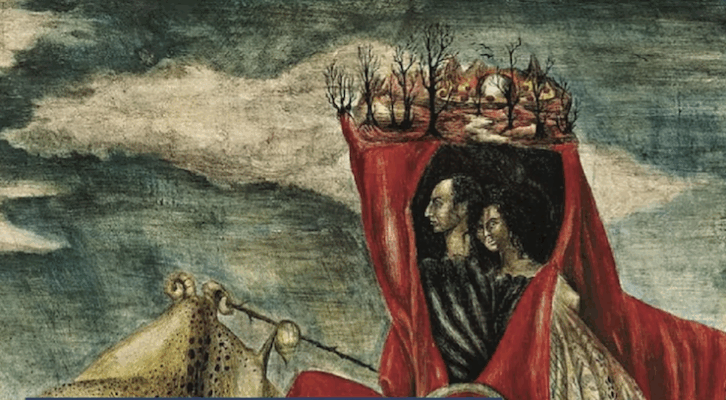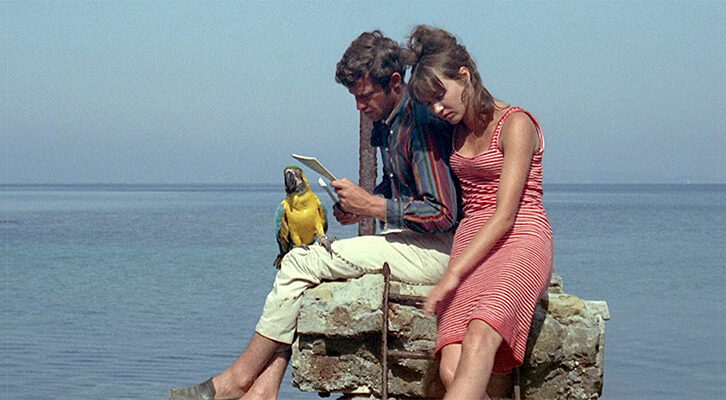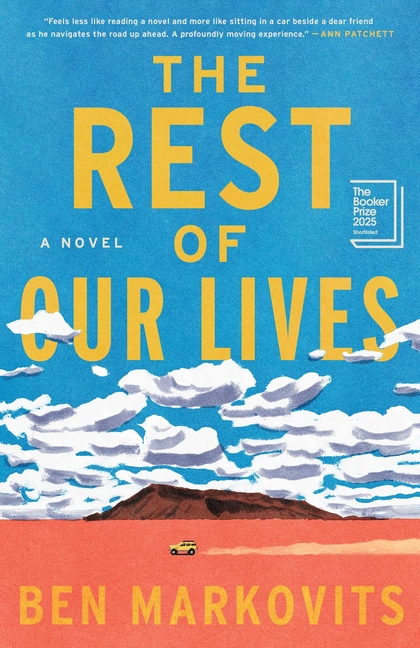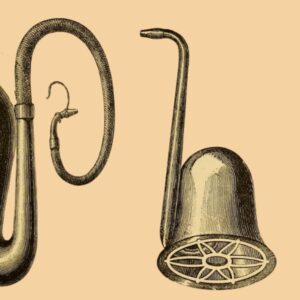
Escape from the Land of the Dead: On Leonora Carrington’s The Stone Door
"Magic and ideology are both practices of belief."
He put his head close to my ear and said: “Tell me a story and I will give you a slice of funeral cake.”
“Must the story be true?” I asked, setting down my burden.
“All stories are true.,” he said. “Begin.”
*
All stories are true. Begin. This exchange happens near the beginning of The Stone Door, Leonora Carrington’s metaphysical novel of the Second World War, in a dream of her nameless narrator. It’s not a bad motto for Carrington’s work as a whole. The dream is a story, recorded in a lost journal, the story she tells is a story within it, and as she tells it, it makes itself true.
For Carrington, born in 1917, art was an escape from her genteel, repressive British upbringing. She did poorly at a series of convent schools, and her family ended her formal education at fifteen. After a brief sojourn in the cattle market of the London debutante scene, she convinced her parents to let her enroll in an art school run by the Cubist painter Amédée Ozenfant, where she became involved with the Surrealist avant-garde. The next decades of her life would see her in Paris, in Provence, in a psychiatric hospital outside of Madrid, in Lisbon waiting for an escape from both the Nazis and her domineering family, and finally, in Mexico, where she would live and work as a painter and a writer until her death in 2011.
The Stone Door, written after Carrington’s arrival in Mexico, and recently reissued by NYRB, is sometimes called a puzzle box, which implies something tidy and symmetrical and quite unlike Carrington’s actual work. Instead, the novel is a cluttered bird’s nest, made up of various shiny bits of found material: fairy tale, Surrealist dream writing, occultist drivel, prophetic tome, bourgeois domestic novel.
Magic and ideology are both practices of belief: how to inspire it, how to turn it into action. How to turn a human into a statistic, an alien, an enemy combatant–transformations worked not through incantation, but through the movement of paper in government offices.
The Stone Door’s two narrators are Zacharias, a Jewish orphan whose life whose life unfolds with the cruelty and sudden magic of fairy tales, and a nameless woman living in Mexico City who, by the time the novel starts, has already vanished from its pages, leaving behind a philandering husband, a maid who may be a werewolf, a diary of occultist practices, a diminutive witch with an army of cats, and a collection of disturbing bourgeois imperial sorcerers who all seem to agree that she must be stopped before she causes untold calamity. Although Zacharias and the nameless, vanished wife live in different worlds, an invisible thread links them. They see each other in dreams and visions, haunted by a prophecy that neither of them is allowed to read. One of them, perhaps, is already dead, locked behind the stone door that gives the novel its title. It’s not entirely clear which one.
This fragmentary plot is haunted by disconcerting echoes of the second World War and the Holocaust. When Zacharias is sent to an orphanage, his name is replaced by a number, and he dreams that evil priests are going to skin him and use his hide for clothing. His mother has pedaled away on her sewing machine “to Poland, where his father lay dead under the snow.” There’s a queasy familiarity to the details of this horror. The fairy tale form can’t digest them. They surface like a forgotten pin lost in the seams of a dress: point first, into flesh.
*
Much of Zacharias’s story is drawn from the life of Leonora’s second husband, Chiki Weisz. A Hungarian Jew, Weisz’s destitute mother surrendered him to an orphanage as a young child. As a young man he would travel on foot across Europe fleeing Antisemitic persecution, and he would work with the photographer Robert Capa to document the doomed Popular Front in the Spanish Civil War. In 1940 he was living in Paris.
When France fell, Weisz was doubly endangered, as the Vichy government pursued both Jews and leftist refugees from the Spanish Civil War. He risked his life to rescue Capa’s Spanish Civil War negatives from confiscation, and no sooner had he delivered them to a safe recipient, traveling by bicycle across France with the contraband film disguised in a collection of fancy chocolate boxes, than he was arrested and interned in a concentration camp. From here, too, he miraculously escaped, making his way to Marseilles, where Capa arranged his authorization to travel to Mexico. He arrived in his new country with nothing. In an obituary published in Mexico’s Diario Judio, Pablo Weisz, his son with Carrington, would say that Weisz was so reluctant to leave Mexico, his refuge from the horrors of Nazism, that for the thirty-three years Pablo lived abroad, his father insisted that he couldn’t visit him, because he didn’t possess a passport.
Carrington had her own horror story of the Second World War. In 1937, she had met the surrealist painter Max Ernst and fallen in love. She was nineteen, he was forty-six. When the Nazis invaded France, they were living together in Provence. Ernst had been interned in a prison camp called Les Milles once at the start of the war as a German national and potential spy, released, and then imprisoned again by the Vichy government after France fell. In his native Germany, he was reviled by the Nazis as a degenerate artist. When the gendarmes took him from the house he and Carrington shared, she fell into a despairing fugue state that ended in an episode of psychosis, chronicled in her memoir, Down Below.
Fleeing from France to Spain, Carrington starved, drank orange blossom water to make herself vomit, donated her passport and visa to a complete stranger on the street in Madrid, learned the language of horses, endured a harrowing assault by fascist officials, and telephoned the British consul in an attempt to convince him that “the World War was being waged hypnotically by a group of people—Hitler and Co—[…] that to vanquish him it would be sufficient to understand his hypnotic power.”
Down Below freely mixes memoir with a kind of unsparing fantasy. Imprisoned in a mental hospital in Spain, Carrington recounts the abjection and ecstasy of psychosis without flinching—her belief that she was engaged in psychic warfare to end the war, the agony of Cardiazol injections, intended to treat her madness by provoking seizures, her animistic attempts to convince the iron bars on her window to open and free her. From England, her parents arranged for her to be permanently committed to a sanatorium in South Africa. Instead, she escaped her minder while waiting to be shipped off and fled to the Mexican Embassy in Lisbon for asylum.
There Carrington met the journalist Renato Leduc, an acquaintance of hers from Paris and a friend of Picasso’s. He offered to marry her—a social convention neither of them believed in, but which allowed her to emigrate with him to Mexico, and escape the South African sanatorium. They did not stay married long. Her madness left her, and did not return. Luis Morales, the doctor who had attended her in the Spanish asylum, would purportedly wonder in his later life if she had ever really been mad at all—strange visions notwithstanding.
If evil has power, her writing insists, the reason is partially because we have convinced ourselves that we have none.
What impossible coincidence, then, that she and Chiki ever met each other. They were exiles twice over, first from the countries of their birth, and then from a France fallen to Nazism. The road that brought them together contained a thousand unmarked turns that led only to imprisonment or death. It is this impossible meeting that makes up the messy subject of The Stone Door, with its thousand dream stories and narrative dead ends. For all the novel’s antic vignettes about magic flutes and egg children and dragon soup, there’s something deeply private about The Stone Door, an insistence that no reader, no outsider, be fully allowed to understand its plot. She and Chiki dreamed each other before they met each other, Carrington insists. They clawed each other back from the dead.
*
Occultism, in whose rituals The Stone Door is deeply steeped, is not necessarily a tool of liberation. Leonora’s intuition, during her nervous breakdown, that the war was being waged by hypnotic power was perhaps not entirely wrong. To the Surrealists, madness was a sacred state, an illumination that revealed, as André Breton, high priest of Surrealism, put it, “that we are not alone at the helm of the ship”—that the great and small coincidences of our life are directed with the participation of forces to which we have no conscious access. But even as the Surrealists were experimenting with ritual and divination in the face of horror, the Nazis also embraced occultism, with its secret and hierarchical rituals of power. Magic and ideology are both practices of belief: how to inspire it, how to turn it into action. How to turn a human into a statistic, an alien, an enemy combatant–transformations worked not through incantation, but through the movement of paper in government offices.
Rosemary Sullivan, author of Villa Air-Bel, a chronicle of the safe house from which Max Ernst and other artists who had been persecuted by the Vichy regime would ultimately escape from France, describes the situation thus:
In France in 1940 people soon learned how quickly everything could change. Suddenly destinies ceased to be a matter of personal control. The life and death of any individual became merely something to be haggled over in bureaucratic ministries: who was an alien, who should be imprisoned as an enemy alien, who should be deported to certain death? Not chance, not contingency, but someone else, a stranger, arbitrarily decided who lived and who died.
What power does art have, against this deadly power? What saved Carrington, Weisz and Ernst was not art but exit visas, and the brave intervention of foreign diplomats. Nevertheless, Carrington’s work retains this sense of having run a wire into the hidden current of the universe. In The Stone Door, we are always about to fall through a hole in the floor of real life, into some undiscovered cellar from which our disturbances have been emanating. Down there is something ghastly and absurd: a parrot impaled on the door to the underworld, a summoning circle and a slaughtered goat, a subterranean river that runs between the land of the living and the land of the dead. And yet, confronted face to face, the order of horror in Carrington’s world is always more fragile than it first appears. If evil has power, her writing insists, the reason is partially because we have convinced ourselves that we have none.
At the beginning of The Stone Door, the story is this: there are two people, a man and a woman, whose union is going to overturn the world order. It’s been foretold and foreordained, and the most important thing in the world is that the powers that be find this couple and redirect their power into preserving the status quo. A cabal of sorcerers pursues them: faceless, dressed in the clothing of death, of authority, of Empire. But there’s another story inside this story, and it goes a little differently. In it, a very small dragon eats the book in which the prophecy is written. A woman disappears into thin air and reappears in an apple tree. Zacharias, trapped in a train car with a nightmare of Empire, opens a window and climbs out into the night. There is no apocalypse, and the world is not reborn. Nevertheless, the world moves a little: an orphan boy, playing the flute, escapes from certain death and crosses the boundary of the underworld to go find his love.
Celia Bell
Celia Bell has written short fiction for VQR, The White Review, The Sewanee Review, The Southern Review, and Bomb Magazine. She is the winner of the 2018 VQR Emily Clark Balch Prize for Fiction and holds an MFA from the New Writers Project at the University of Texas. Her debut novel, The Disenchantment, came out in 2023.



















